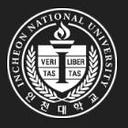A Closer Look at the Dynamics of the p-Laplacian Allen–Cahn Equation
Researchers from Korea find numerical solutions to the p-Laplacian Allen–Cahn equation
The Allen–Cahn equation is useful to study phase separation processes, observed mainly in material science, fluid dynamics, image processing, and so on. Recent studies show that phase separation driven by the Allen–Cahn equation can be modelled in cell aggregation. Now, researchers from Korea reveal the phase separation, boundedness, and energy decay properties of the p-Laplacian operator with the Allen–Cahn equation, paving the way for better use of mathematical phase-field modeling.
In the past few decades, the use of phase field-modeling equations for mathematical modeling has progressed. Phase separation has been studied extensively in thermodynamics and materials engineering, but recently, biological field have also begun to take an interest in this phenomenon. The Allen–Cahn equation (AC equation) is one such reaction-diffusion equation, used to study the evolution of the non-conserved phase-field interfaces separating different physical regions. Originally introduced to model the motion of anti-phase domain (crystallographic defect) formation in a binary alloy, it is now widely used from processing geometrical image segmentation to studying crystal growth.
Concurrent with these developments, several new operators for the AC equation (such as fractional Laplacian and p-Laplacian) have also been proposed. The p-Laplacian, for example, appears in mathematical models of physical processes such as nonlinear diffusion. However, despite wide applicability, little is known about the influence of Laplacian operators, particularly p-Laplacian, on solutions of the Allen–Cahn equation.
Recently, a team of researchers from Korea, including Professor Dongsun Lee from Incheon National University, investigated the dynamics of the p-Laplacian AC (p-AC) equation. The study was specifically aimed at examining how the type of Laplacian influences a solution to the AC equation. This paper was made available online on 7 August 2022, and will be published in Volume 434 of the Applied Mathematics and Computation journal in 1 December 2022.
Explaining the rationale of this study, Prof. Lee says, “We consider three criteria when we model with phase-field equations. These include the evolution of phase separation, energy dissipation law, and the non-conservation of mass. Our numerical study was revolved around these basic properties of the AC equation”.
The researchers first characterized the different morphological changes of numerical solutions under various numerical tests (like phase separation, equilibrium profile, boundedness, total energy dissipation, traveling wave solutions, geometric motions, and comparison of AC equations with different Laplacians). Next, computational tests were employed to analyze the interfacial dynamics of AC equations and p-Laplacian.
The experiments demonstrated that the solutions of the AC equation maintained the three criteria — phase separation, boundedness, and energy decay properties — with the p-Laplacian operator. The researchers also identified that the sharpness of an interface can be adjusted to the p-values, revealing an advantage of p-AC equation over the classical Laplacian.
Discussing the long-term implications of this study, Prof. Lee says, “With phase modeling and the use of mathematical equations like p-AC, we can identify how cells organize complex biochemical reactions in distinct chemical environments, or in organelles where components diffuse for processes.”
For Prof. Lee and his co-author on this study, Prof. Chaeyoung Lee of Korea University, the pursuit of these mathematical models is far from over. Building on these results, the researchers wish to advance the understanding of phase field models by studying biochemical reactions using p-AC equations in the future.
Reference
Authors: Dongsun Lee1 and Chaeyoung Lee2
Title of original paper: Numerical solutions of the Allen–Cahn equation with the p-Laplacian
Journal: Applied Mathematics and Computation
DOI: https://doi.org/10.1016/j.amc.2022.127435
Affiliations:
1Department of Mathematics Education, Incheon National University, Incheon
2Department of Mathematics, Korea University, Seoul
About Incheon National University
Incheon National University (INU) is a comprehensive, student-focused university. It was founded in 1979 and given university status in 1988. One of the largest universities in South Korea, it houses nearly 14,000 students and 500 faculty members. In 2010, INU merged with Incheon City College to expand capacity and open more curricula. With its commitment to academic excellence and an unrelenting devotion to innovative research, INU offers its students real-world internship experiences. INU not only focuses on studying and learning but also strives to provide a supportive environment for students to follow their passion, grow, and, as their slogan says, be INspired.
Website: http://www.inu.ac.kr/mbshome/mbs/inuengl/index.html
About the author
Prof. Dongsun Lee is an Assistant Professor of Mathematics Education at Incheon National University (INU). In 2015, Dongsun Lee received a PhD in mathematics from Korea University. Before coming to INU, he completed his postdoctoral training at Ulsan National Institute of Science & Technology (UNIST). Currently, his group studies industrial mathematics and ways to deliver mathematical knowledge to learners.
